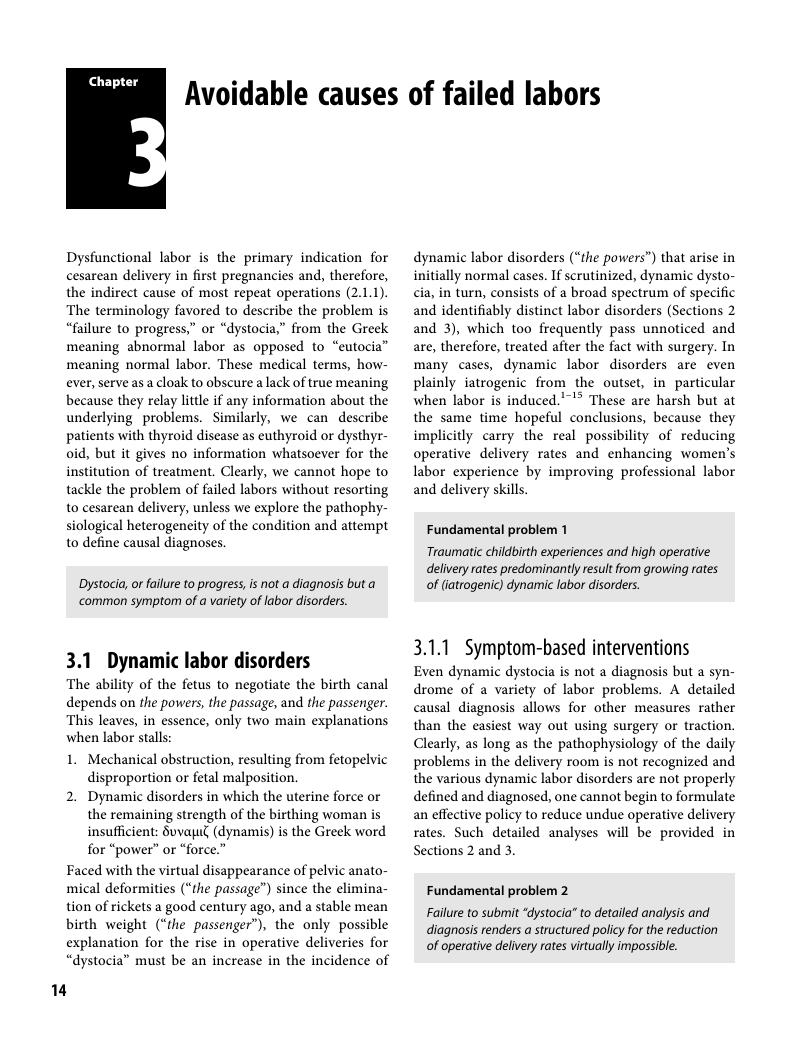Book contents
- Proactive Support of LaborThe Challenge of Normal ChildbirthSecond edition
- Proactive Support of Labor
- Copyright page
- Dedication
- Contents
- Foreword to the first edition
- Preface
- Web-links
- Chapter 1 General introduction
- Section 1 A wake-up call
- Chapter 2 Medical excess in normal childbirth
- Chapter 3 Avoidable causes of failed labors
- Chapter 4 Harmful birth care practices
- Chapter 5 Destructive territorial disputes
- Chapter 6 Self-sustaining mechanisms
- Section 2 Back to basics
- Section 3 Proactive support of labor
- Index
- References
Chapter 3 - Avoidable causes of failed labors
from Section 1 - A wake-up call
Published online by Cambridge University Press: 05 September 2015
- Proactive Support of LaborThe Challenge of Normal ChildbirthSecond edition
- Proactive Support of Labor
- Copyright page
- Dedication
- Contents
- Foreword to the first edition
- Preface
- Web-links
- Chapter 1 General introduction
- Section 1 A wake-up call
- Chapter 2 Medical excess in normal childbirth
- Chapter 3 Avoidable causes of failed labors
- Chapter 4 Harmful birth care practices
- Chapter 5 Destructive territorial disputes
- Chapter 6 Self-sustaining mechanisms
- Section 2 Back to basics
- Section 3 Proactive support of labor
- Index
- References
Summary

- Type
- Chapter
- Information
- Proactive Support of LaborThe Challenge of Normal Childbirth, pp. 14 - 20Publisher: Cambridge University PressPrint publication year: 2015



